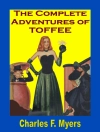In ‘Frank Reade and His Steam Horse, ‘ author Luis Senarens presents a riveting tale of adventure and innovation, blending elements of science fiction with the popular literature of the 19th century. The narrative follows the ingenious inventor Frank Reade, who uses his cutting-edge steam-powered horse to embark on thrilling expeditions that explore uncharted territories and face formidable challenges. Senarens’s craft is marked by his vivid descriptions, engaging dialogue, and a captivating sense of wonder that reflects the zeitgeist of an era enamored with technological progress and exploration. Luis Senarens, often referred to as the pioneer of the young adult and science fiction genres, crafted this thrilling narrative during a time when America was undergoing significant industrial advancement. His own fascination with technology and innovation is palpable throughout the novel, mirroring societal dreams of a future imbued with mechanical marvels. Senarens’s extensive background in children’s literature further informs his ability to write compelling tales that ignite the imaginations of young readers. Recommended for lovers of adventure and steampunk aficionados alike, ‘Frank Reade and His Steam Horse’ offers not only an enthralling journey but also a portal into the aspirations and anxieties of a society on the brink of technological revolution. This book is an essential read for anyone interested in the intersections of literature, history, and the evolving human condition.
About the author
Luis Senarens (1863–1939), often recognized as ‘The American Jules Verne’, was a prolific author of dime novels that were immensely popular in the late 19th and early 20th centuries. Born in Brooklyn, New York, to Spanish immigrants, Senarens began his literary career at the tender age of sixteen. He specialized in adventure stories featuring fantastic inventions and is particularly renowned for his contributions to the Frank Reade series. ‘Frank Reade and His Steam Horse’ is one of the numerous works within this series, portraying the thrilling escapades of a young inventor and his extraordinary machines – a theme resonant throughout Senarens’ literature. His stories were characterized by a blend of scientific ingenuity and bold exploration, a reflection of the era’s fascination with progress and innovation. Despite the formulaic nature of the dime novel genre, Senarens’ work stood out for its vivid imagination and the incorporation of current technological advancements into the narrative. Regrettably, although pivotal in shaping early science fiction, Senarens’ work, like much of dime novel literature, has not received lasting scholarly attention. Nonetheless, his influence on the development of the science fiction genre is undeniable, as he laid the groundwork for future imaginative storytelling featuring science and technology.












